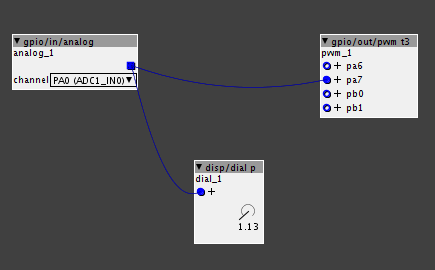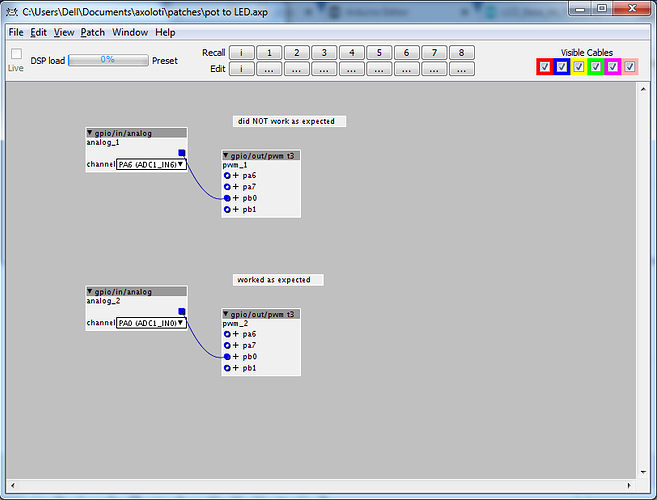Apologies if this is straightforward but I'm struggling with something. I am messing about with the Axo and a breadboard just trying to learn the most basic electronics stuff. So far I can send a pot into Axo via an analog input pin and see the result from 0 - 64:
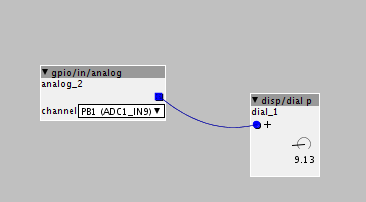
I can connect an LFO to a PWM output and see an LED dimming:
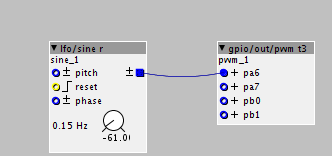
If I connect the pot directly to the LED (i.e. without going through the Axo) I can control the brightness. But... if I connect the analog input to the PWM output nothing happens and the dial "sticks" at a value of about 10:
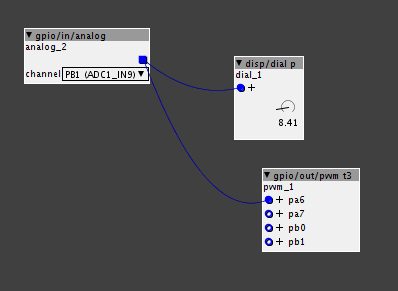
Why would this be?

